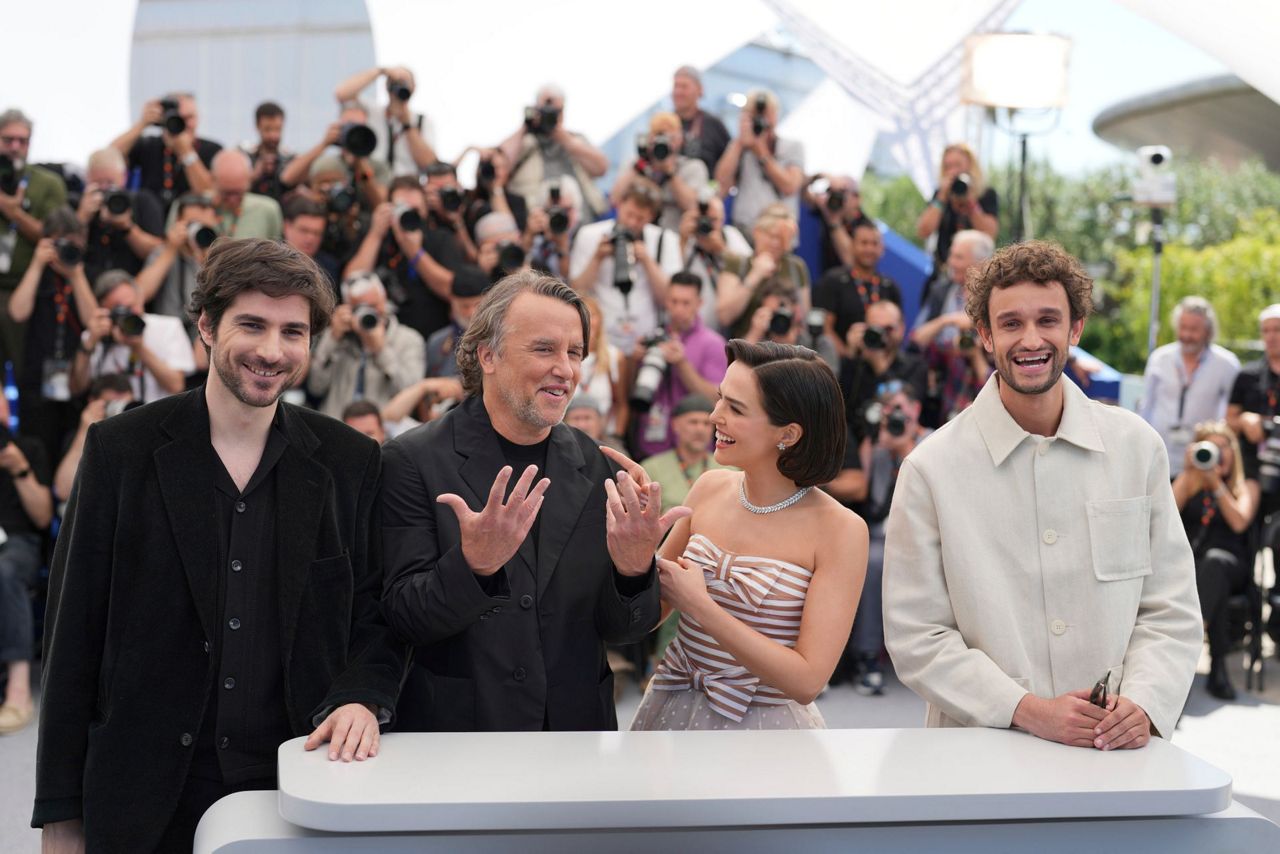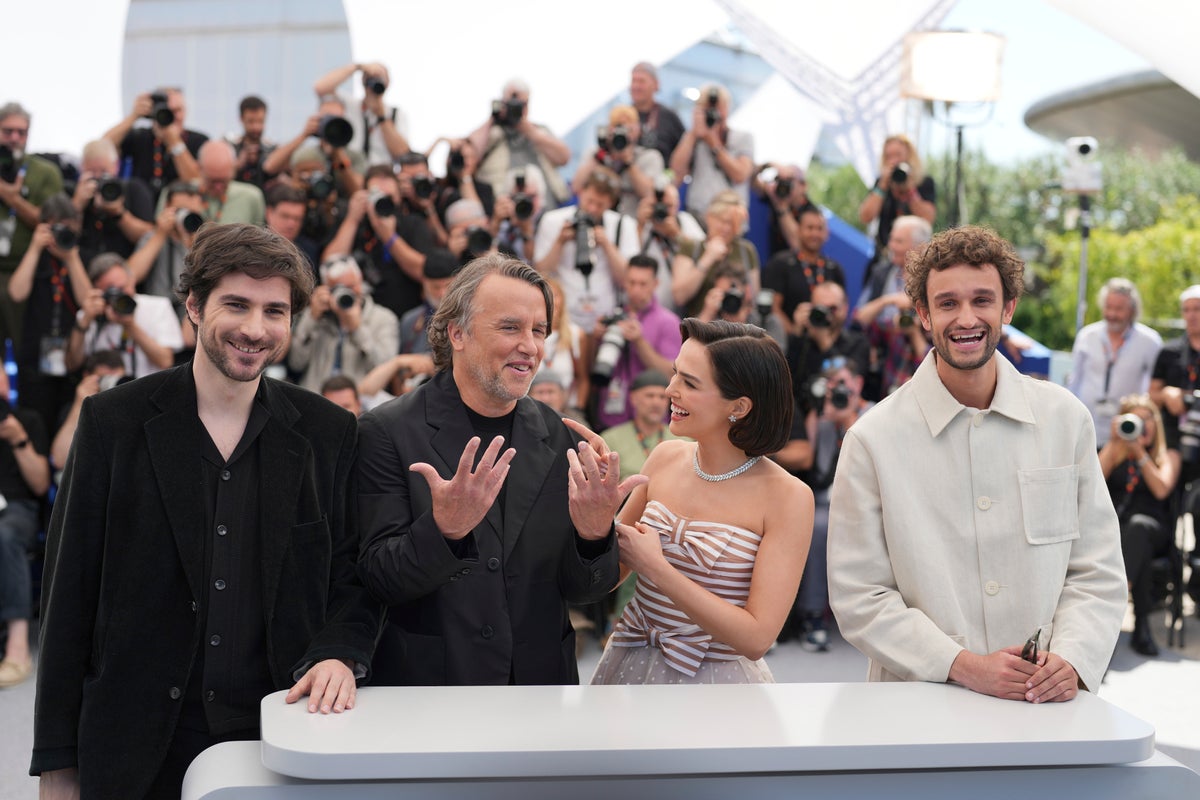## Bonjour, Film Buffs! Linklater Turns Cannes into a Parisian Playground Forget pixelated worlds and laser-guided explosions. Richard Linklater’s latest cinematic masterpiece isn’t about saving the galaxy, it’s about capturing the zeitgeist of a bygone era. Just imagine: sun-drenched Parisian streets, breezy cafes, and the heady energy of the French New Wave, all filtered through Linklater’s signature blend of nostalgia and indie charm. This isn’t just a film, folks, it’s a love letter to cinema history, and it’s already making waves at Cannes. Buckle up, because we’re taking a ride into Linklater’s richly textured homage to cinematic brilliance.
The Spirit of Freedom
How “Nouvelle Vague” Reflects the New Wave’s Independent Ethos

Richard Linklater’s “Nouvelle Vague” is more than just a film about the making of a film; it’s a love letter to the independent spirit that defined the French New Wave. This cinematic movement, which emerged in the late 1950s and early 1960s, was characterized by its rejection of traditional filmmaking conventions and its embrace of personal expression. Linklater’s film captures this spirit perfectly, showcasing the youthful audacity and rebellious energy that fueled the New Wave.
One of the most striking aspects of “Nouvelle Vague” is its visual style. Shot in black and white, the film emulates the aesthetic of classic New Wave films, with its handheld camerawork, jump cuts, and unconventional framing. This visual language reflects the movement’s desire to break free from the constraints of Hollywood filmmaking and to create a more raw and authentic cinematic experience.

A Personal Journey: Linklater’s Own Connection to the New Wave
Linklater’s admiration for the French New Wave is evident throughout “Nouvelle Vague.” He has spoken openly about the profound influence this movement has had on his own filmmaking, citing its emphasis on personal storytelling and its willingness to experiment with form and style.
The director’s own films, such as “Slacker,” “Dazed and Confused,” and “Before Sunrise,” share many of the hallmarks of New Wave cinema. They are characterized by their naturalistic dialogue, their focus on everyday life, and their exploration of youthful angst and alienation.

Shared Values: Tracing the Influence of the New Wave on Linklater’s Own Filmmaking
Linklater’s decision to make “Nouvelle Vague” was driven by a desire to pay homage to the filmmakers who inspired him. He wanted to capture the essence of the New Wave and to share its spirit with a new generation of film lovers.
“I’ve always felt that if you do it long enough, maybe you should make one film about making films,” Linklater said in a recent interview. “It was a way for me to revisit those early influences and to explore the creative process itself.”

Revisiting the Past: The Emotional Resonance of Making a Film About Film Creation
Making “Nouvelle Vague” was a deeply personal journey for Linklater. He has said that the film brought him back to his own early days as a filmmaker, when he was full of passion and ambition.
“I felt like I was 28 years old making this film,” he recalled. “It was a very emotional experience.”

“Nouvelle Vague” as a Legacy: How Linklater’s Film Keeps the Spirit of the New Wave Alive
Linklater’s “Nouvelle Vague” is a testament to the enduring legacy of the French New Wave. It is a film that not only celebrates the movement’s history but also keeps its spirit alive for future generations of filmmakers.

Critical Reception and Impact: “Nouvelle Vague” at Cannes
A Triumph at Cannes: The Film’s Enthusiastic Reception and Potential Awards Consideration
Linklater’s “Nouvelle Vague” has been met with widespread acclaim at the Cannes Film Festival. Critics have praised the film’s meticulous recreation of the New Wave aesthetic, its insightful portrayal of the creative process, and Linklater’s masterful direction.
The film is considered a strong contender for the Palme d’Or, Cannes’ most prestigious award.
Relevance Today: The Enduring Themes and Influence of the French New Wave
“Nouvelle Vague” demonstrates the timeless relevance of the French New Wave. Its themes of artistic freedom, rebellion against convention, and the power of personal expression continue to resonate with audiences today.
The film’s exploration of the creative process itself is particularly compelling in our current era, where filmmaking is increasingly dominated by technology and studio interference.
A Cinematic Conversation: How “Nouvelle Vague” Sparks New Discussions About Filmmaking
Linklater’s film has sparked a renewed conversation about the nature of filmmaking. It invites viewers to reflect on the challenges and rewards of creative expression, and to appreciate the enduring legacy of the French New Wave.
“Nouvelle Vague” is more than just a film about the past; it’s a film about the future of cinema,” said one critic. “It is a reminder that the most important thing in filmmaking is to tell stories that matter, to be bold and innovative, and to never stop exploring new ways to tell stories.”
Conclusion
Richard Linklater’s latest offering, a vibrant homage to the French New Wave, has undeniably captivated Cannes audiences. The film, as Spectrum News aptly describes, is a love letter to cinematic history, blending Linklater’s signature storytelling style with the innovative techniques and thematic explorations of the Nouvelle Vague. From its handheld camerawork and jump cuts to its exploration of youth, disillusionment, and the power of cinema itself, the film embodies the spirit of rebellion and artistic experimentation that defined that era.
This cinematic resurrection isn’t just a nostalgic trip down memory lane; it speaks volumes about the enduring influence of the French New Wave on contemporary filmmaking. Linklater’s decision to pay tribute to these pioneers underscores the continued relevance of their ideas and techniques, proving that their legacy transcends time and continues to inspire new generations of filmmakers. As the film makes its way to wider audiences, its impact will undoubtedly be felt, perhaps sparking renewed interest in the classics of the Nouvelle Vague and encouraging a new wave of cinematic innovation.
